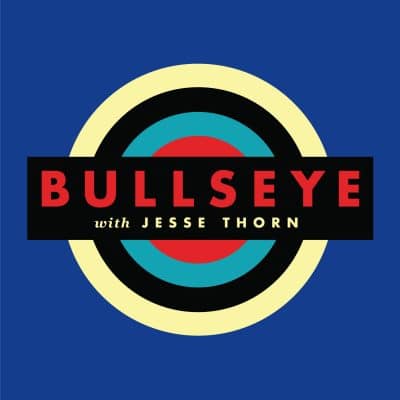Episode notes
We’re joined by Keith Phipps, the AV Club’s editor and Scott Tobias, the AV Club’s film editor to discuss picks in music and movies for April 2011. They discuss the film Meek’s Cutoff, which follows a group on the Oregon Trail, and Certified Copy, a drama starring Juliette Binoche, both currently in theaters. On Blu-Ray, we have Dario Argento’s horror film Inferno. Finally, Keith talks a little about the musician Kurt Vile’s release, Smoke Ring for My Halo.
JESSE THORN: It’s The Sound of Young America, I’m Jesse Thorn. Once a month or so we check in with our friends at the AV Club to help us separate the wheat from the chaff of the world of popular culture. This month we’re joined by Keith Phipps, the AV Club’s editor, and Scott Tobias, the film editor of the AV Club. Gentlemen, welcome back to The Sound of Young America.
SCOTT TOBIAS: Well hello.
KEITH PHIPPS: Thanks for having us.
Click here for a full transcript of this interview.
JESSE THORN: It is always a pleasure to have you. Let’s get right into those culture picks. Scott, let’s talk a little bit about Meek’s Cutoff. This is a film set in the American west, on the Oregon Trail to be specific, it premiered at the Toronto Film Festival in 2010. It stars Bruce Greenwood, Paul Dano, and Michelle Williams. Here’s a scene from the movie. In this scene Michelle Williams and Bruce Greenwood, who plays the titular Meek, are guiding a small group through the Oregon Desert.
Scott, my whole understanding of the Oregon Trail is based in the Apple II+, so I don’t know if a big issue is wagon wheels breaking or people getting dysentery; but I can only assume that that is the crux of this film.
SCOTT TOBIAS: You know what, it’s remarkably faithful to the game. The experience is very similar. If you’re used to bad things happening on the Oregon Trail in the video game, then I think the movie recreates that perfectly. I think if you remember, Jesse, you talked to Noel and I in the middle of the Toronto Film Festival, and at that time we had said that it was one of the weaker festivals that we’d been to, but then on the last day I saw this movie. This may be my favorite movie I’ve seen since I’ve been reviewing movies. It’s shot in a very austere style. My critic friend, Mike D’Angelo called it Jerry on the prairie. It’s a film that’s extremely evocative of the physical hardships of traveling down the trail. I absolutely love this movie.
JESSE THORN: What specifically moved you so much about it?
SCOTT TOBIAS: I like that style. I like the deliberateness of it. I like the physicality of it; you get a sense of just how hard it is and how tough this journey is, and really the stakes could not be higher for these families. There’s an incredible sequence where they have to guide their wagons down a hill, and they’re using to rope to do it. As they’re lowering it down you realize that if they let go or if a wheel comes off or something happens, that’s the end of their lives; they can’t move on from there. The stakes are really high. It’s just a powerful experience and it’s a beautiful look at it, as well.
JESSE THORN: Keith, there is a new film by the Iranian director Abbas Kiarostami, I hope I’m not mispronouncing that, called Certified Copy. This is a film by an Iranian director, but not starring Iranian actors; the star is Juliette Binoche. It premiered at Cannes, where Binoche won the best actress award; it’s just now appearing in the United States. Most of the film is in French, but here’s a short clip from the movie that is in English.
Keith, as I understand, Kiarostami’s work has often been concerned with the relationship between truth and fiction and reality and representations of reality, and this is a great example of that.
KEITH PHIPPS: That’s true, and it’s often in a very low-fi kind of way. In some ways this is keeping with what he’s done before, even though there’s a break in that; it’s shot outside of Iran, it’s shot with a professional actor, Juliette Binoche, and costars William Shimell who’s a professional performer, but as an opera singer.
I don’t want to say too much about the plot of the film because it would give too much away, but suffice to say, Juliette Binoche plays the owner of an antique shop in Tuscany, and Shimell plays an English author who is traveling through Italy on a lecture tour. They spend the day together driving around, initially at least, and that’s another Kiarostami trademark, long conversations in cars. At a certain point the movie shifts very subtly, and then not so subtly. It’s certainly a film that rewards attention. It’s a remarkable film, and I almost feel like I’ve talked about it so much in the AV Club and elsewhere that I risk overpraising it, but it’s one of those films I’m not sure you can.
JESSE THORN: Scott, your next pick is from one of the masters of cult horror, Dario Argento, and it’s called Inferno. It just came out on the 30th anniversary Blu-Ray disc. Let’s take a listen to a scene from the movie.
Scott, why does this film speak to you 30 years after it was released?
SCOTT TOBIAS: It actually helps complete the puzzle for me. This is the second film in Argento’s Three Mothers trilogy. It came three years after his most famous movie, which is 1977’s Suspiria, and 27 years before he concluded it with the very disappointing Mother of Tears.
Suspiria was in Germany, and this one, Inferno, is in New York. Even though it takes place in New York, it’s really Argento land. It’s ornate and otherworldly, and as with Suspiria the movie is shot in beautiful primary colors; very striking reds and blues, which stand out in sharp contrast to the darkness and murk that defines most films in the horror genre.
JESSE THORN: Are there any particularly spectacular horror moments that you’d like to share with our audience?
SCOTT TOBIAS: There are a couple. There’s one where a woman goes down to, there’s a pool in the basement of this building, and she drops her keys into it and swims down to get the keys. She goes down into what looks like this sort of preserved chamber that hasn’t been accessed forever, and it’s one of those sequences that’s both terrifying and full of dread, but also kind of beautiful and quiet.
There’s another sequence that’s set entirely to a Verde opera, and another sequence where someone is attacked by rats. I think it’s these kinds of horror moments that really redeem Inferno, because it certainly has its awkwardnesses.
JESSE THORN: Keith, let’s move away from film and on to music and talk a little bit about Kurt Vile. He’s a guitarist and singer from Philadelphia; former member of the band War on Drugs. He’s been compared to a twisted Springsteen, or Tom Petty, and he’s got a new album out called Smoke Ring for My Halo. Let’s listen to a song from that album, it’s called Jesus Fever.
So Keith, what do you find so compelling about Kurt Vile?
KEITH PHIPPS: I’m not sure that any of those points of comparison, actually, I’m really hearing that on the album at all. In some ways I feel like I’m playing catch up, because I only started listening with his 2009 album, his first from Matador, that was Childish Prodigy. I like that album a lot, but this one just really grabbed me in a way that even that one didn’t.
It’s got this haunted – – it sounds like it’s recorded in a room by himself with nothing but loneliness to keep him company. Beyond the atmosphere there’s a real catchiness to these songs as well; I guess that’s where you can hear the Tom Petty comparisons. For all the desolate sonics that he traffics in, these are songs that stick in your head.
JESSE THORN: Scott, Keith, thank you so much for taking the time!
KEITH PHIPPS: Thank you for having us.
SCOTT TOBIAS: Thanks, Jesse.
JESSE THORN: Keith Phipps is the editor of the AV Club, Scott Tobias the film editor. You can find them online at AVClub.com.
In this episode...
Guests
- Keith Phipps
- Scott Tobias
About the show
Bullseye is a celebration of the best of arts and culture in public radio form. Host Jesse Thorn sifts the wheat from the chaff to bring you in-depth interviews with the most revered and revolutionary minds in our culture.
Bullseye has been featured in Time, The New York Times, GQ and McSweeney’s, which called it “the kind of show people listen to in a more perfect world.” Since April 2013, the show has been distributed by NPR.
If you would like to pitch a guest for Bullseye, please CLICK HERE. You can also follow Bullseye on Twitter, YouTube, and Facebook. For more about Bullseye and to see a list of stations that carry it, please click here.
Get in touch with the show
People
How to listen
Stream or download episodes directly from our website, or listen via your favorite podcatcher!





